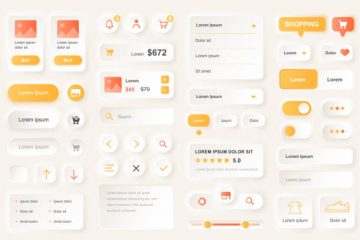
Tips to Improve Your Website’s User Experience in 2022
Websites are not an exception to this rule. User experience is crucial for the success of any product, service or product.
A business’s online presence is just as important as a well-designed storefront. The website of a business is its face. Users are more knowledgeable about web design today and expect high-quality work.
Many businesses, especially small ones, can feel overwhelmed when they have to deliver a great website UX. It is possible to improve the user experience without much effort.
Design Advisor found that improving user experience can result in better search rankings, increased business leads, and higher revenue. We’ll discuss five steps that can improve the UX of any website in this post.
1. Provide engaging content
Engaging content is the key to a great website UX. Visitors want more than just a purchase. They want an experience. Engaging in content strategies is a great way to accomplish this.
Content strategies that are effective focus on telling the brand’s story and establishing a relationship between the business and its clients.
Content can be written in any format, including a blog post or a vlog. It is important to use content to create a brand identity so potential clients can learn more about the person they are buying from.
Trust increases with familiarity; 82% of customers are more likely to trust a business after reading their custom content.
2. Layout strategically
In 2022, brutalism will continue to rise when it comes to style. Brutalism is a minimalistic approach to layouts that focuses on the user experience. A beautiful and artistic website can also help establish your brand as a leader in the market and take risks.
You can be more conservative by thinking about how a layout can help visitors understand the presented information.
Minimalism and broken-grid layouts are two other trends that have emerged. These trends emphasize the importance of reducing clutter. We will talk more about this later in the text.
3. Give information concisely and efficiently
Website visitors visit websites to find information. Although it might seem redundant, some businesses seem not to be able to see the logic behind this statement based on their website design.
You can make sure that users get what they want by providing information in a structured and elegant way.
Today’s web designers seem to prefer simpler designs. Many web designers are using bullet-point lists to communicate information, and they’re seeing great results.
While lists without bullet points are viewed by 55% of users, 77% prefer lists with bullet points. It is profitable to communicate information clearly. Businesses can make sure they convey the message effectively and draw attention only to relevant elements.
4. Do not irritate your visitors
All our tips were about what you should do. It’s just as important to talk about what you should do when it comes to web design and user experience.
Website visitors are constantly exposed to pop-ups and autoplay. It is important that they appreciate sites that do not allow these annoying features to be implemented.
Avoid clutter, background music, and videos that play automatically when designing your website. Visitors won’t feel at home if these elements are present.
5. Optimize your website
It’s also important to focus on the backbone and user experience.
This has a negative impact on revenue. High expectations regarding website speed can lead to visitors being less inclined to purchase from a site that is slow. Slow websites are costing $2.6 billion in lost sales each year .
Site speed optimization and mobile responsiveness don’t require too much effort or cost. There are many web services and tools available that can help you test your site’s performance and optimize any features.







